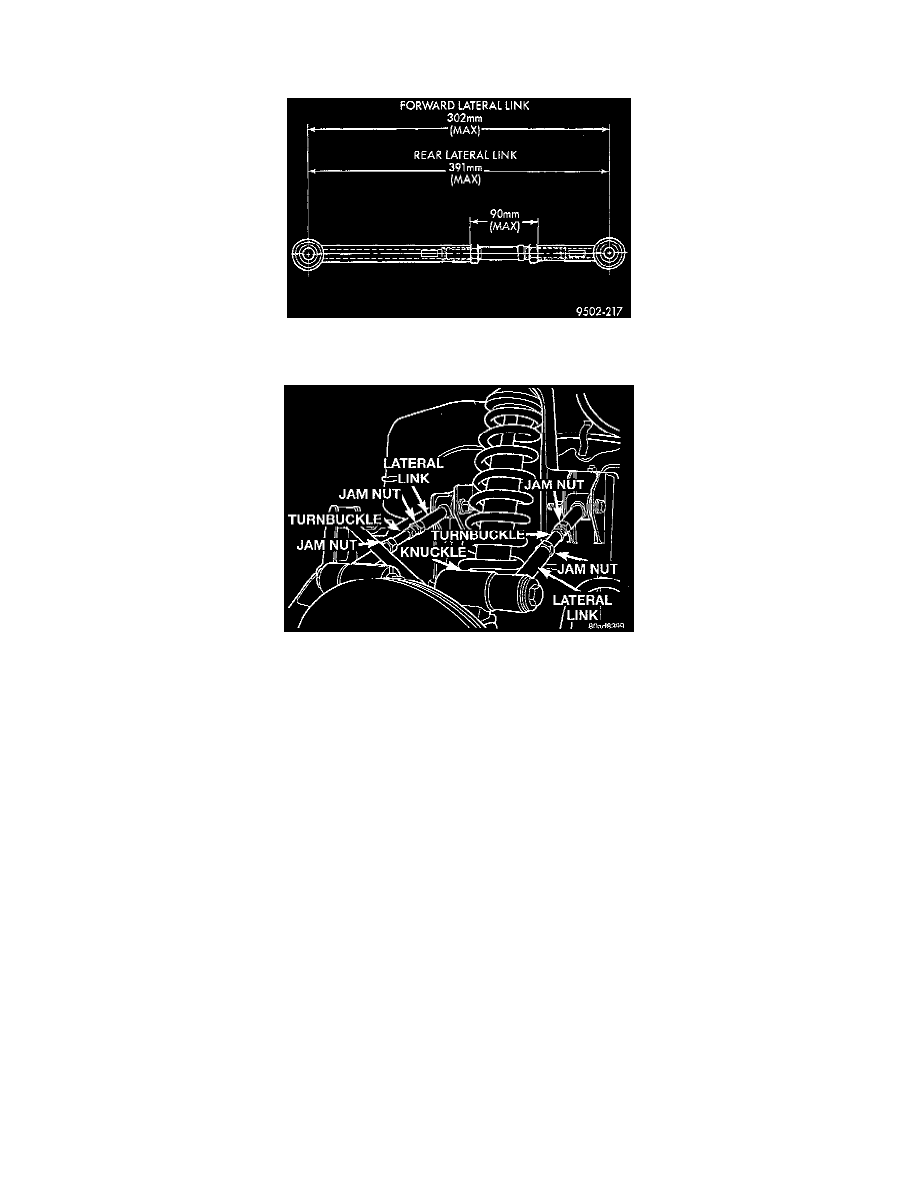Prowler V6-3.5L VIN G (1999)

Alignment: Service and Repair
Front and Rear Static Toe Position
CAUTION: When setting rear camber on this vehicle, the maximum lengths of the lateral links at the locations shown must not be exceeded. If these
lengths are exceeded, inadequate retention of the turnbuckle to the inner and outer link may result.
REAR WHEEL TOE POSITION
The rear wheel toe position on this vehicle is adjusted using the turnbuckles on the lateral links of the rear suspension.
1. By simultaneously turning the two turnbuckles in opposite directions (one outward one inward) the top of the knuckle will rotate. This rotation
of the knuckle will adjust the rear wheel toe setting. When setting rear toe a slight change in the camber setting will occur. If during setting toe,
camber no longer is at the preferred specification continue to adjust camber and toe until both are at their preferred specification.
CAUTION: When tightening the turnbuckle jam nuts do not exceed the specified torque. If the jam nuts are over torqued the lateral links may
be damaged.
2. While holding the turnbuckles from rotating, use a crowfoot and torque wrench to tighten the jam nuts to a torque of 65 Nm (48 ft. lbs.).
NOTE: When setting the front wheel static toe position, it is recommended to leave the engine running during the toe setting procedure.
FRONT WHEEL TOE POSITION
The static wheel toe position should be the final adjustment made to the vehicle during the alignment procedure.
1. Start engine and turn wheels both ways before straightening and centering steering wheel. Center steering wheel and retain with steering wheel
clamp.
2. Remove clamp from steering gear boot attaching it to inner tie rod.
